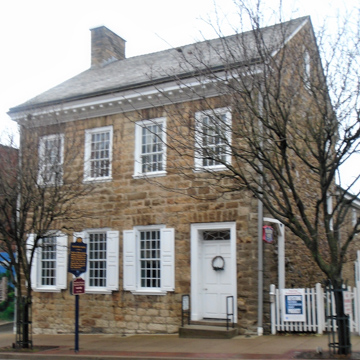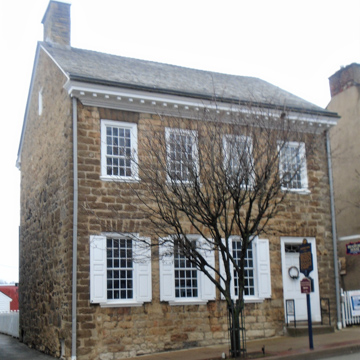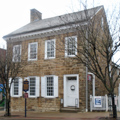Washington's two finest early stone houses ( WS6) were built twenty-four years apart, but within a block of each other. They form the core of Washington's historic district, and illustrate the growing stylistic sophistication of the trans-Appalachian territory after the American Revolution. This house is typical of its period and many other houses throughout western Pennsylvania, with its four bays and side-hall plan with two rooms per story. While such houses are often of sandstone, the Bradford House is unusual for its limestone exterior. This early house has an elegant mahogany staircase and finely crafted interior cabinetry, yet it does not approach the styling seen in the later Le-Moyne house. But by 1812, when the Le-Moyne was built, what was once frontier had become a landscape of permanent settlement. The Bradford house's facade was restored c. 1936 from its storefront configuration to its present appearance by Charles M. Stotz. David Bradford is best known for his support of the Whiskey Rebellion in 1794.
You are here
David Bradford House
If SAH Archipedia has been useful to you, please consider supporting it.
SAH Archipedia tells the story of the United States through its buildings, landscapes, and cities. This freely available resource empowers the public with authoritative knowledge that deepens their understanding and appreciation of the built environment. But the Society of Architectural Historians, which created SAH Archipedia with University of Virginia Press, needs your support to maintain the high-caliber research, writing, photography, cartography, editing, design, and programming that make SAH Archipedia a trusted online resource available to all who value the history of place, heritage tourism, and learning.


















